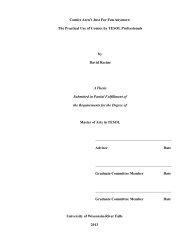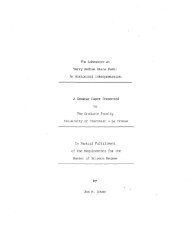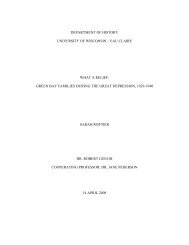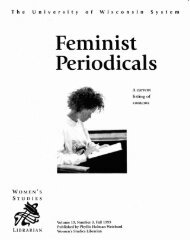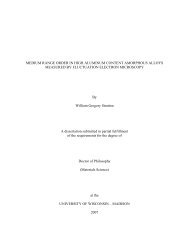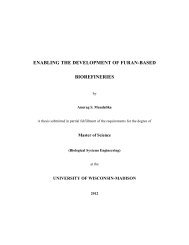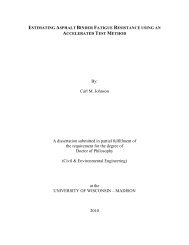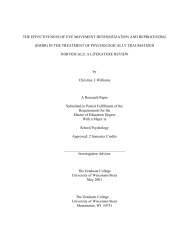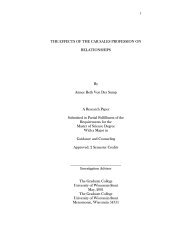RELIGION AND SPANISH COLONIALISM IN THE PHILIPPINES by ...
RELIGION AND SPANISH COLONIALISM IN THE PHILIPPINES by ...
RELIGION AND SPANISH COLONIALISM IN THE PHILIPPINES by ...
Create successful ePaper yourself
Turn your PDF publications into a flip-book with our unique Google optimized e-Paper software.
It is possible that the Tanjay mass grave was not caused <strong>by</strong> political or economic warfare<br />
but instead was a result of religious or ritual warfare (Aure 2004:167). Filipino tales of warfare<br />
include elements of religion and ritual (Aure 2004:168). Junker also suggests an interpretation of<br />
the grave through ethnographic accounts of human sacrifice on the Philippine Islands. There are<br />
accounts of the widespread use of captives in rituals (Junker 1999:34); captives obtained through<br />
raiding and warfare. Aure agrees that ritual may have played a role in the mass burial however<br />
Aure‟s interpretation differs in the source of violence.<br />
Religion and ritual was not only played a role in the care of the dead but may have been a<br />
contributing factor to the cause of death (Aure 2004:164). Ritual and religious violence would<br />
have targeted specific groups of people such as any suspected aswang, witches. The mass burial<br />
may have been a result of witch persecutions (Aure 2004:173). Aswang were persecuted in the<br />
Philippines even before the arrival of the Spanish; these persecutions involved mass killings and<br />
could have resulted in mass graves (Aure 2004:172). Since witchood was “thought to be<br />
transmitted usually along kinship lines” (Aure 2004:171), not only would a suspected aswang be<br />
killed but several members of his family would also be killed in order to be sure the threat was<br />
indeed gone. The belief in aswang not only dictated the death of certain individuals, it also<br />
influenced burial practices (Aure 2004:168). Indigenous Filipinos feared that the dead would<br />
return (Dakudao 1992:135) if they were not properly cared for. This fear was particularly<br />
centered on the belief in aswang. The detached skulls included in many burials may have been<br />
used to prevent the aswang from rising, not as the heads of sacrificed slaves as Junker suggests<br />
(Aure 2004:173).<br />
Skulls used as burial goods have been found associated with many types of burials,<br />
including simple inhumations and boat-coffin burials inside caves (Dakudao 1992:136), and may<br />
18



